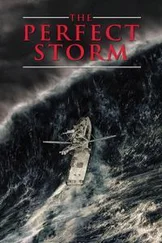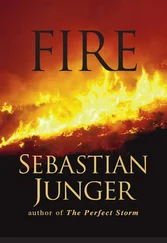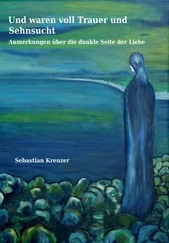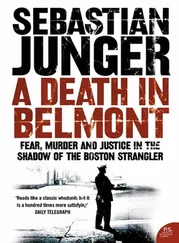“What?” Clinard says. No one says anything and Hoyt walks over to him and just cups his hand on the back of Clinard’s neck.
“Who’s over there?” Clinard says, voice rising in panic.
“It’s Rougle,” Hoyt says quietly.
A strange animal noise starts coming up out of Clinard and he breaks away from Hoyt and backs up in horror. Solowski comes up and asks if Rice is alive. He’s crying as well.
“Yeah, he’s good,” Hoyt says.
“He’s alive?”
“He’s gonna make it, dude.”
The men are taking cover and aiming their weapons southward off the top of the hill and Clinard is roaming around the position shrieking with grief. He finally comes to a stop near Hijar and sits down, sobbing. Hijar is behind a tree stump scanning the draw. “We got friendlies over there we tried to push through and they lit us the fuck up,” Clinard says, trying to explain why they didn’t get to Rougle faster.
“Let’s go brother, come on,” Hoyt says, beckoning Clinard with one hand. Clinard just sits there shaking his head. “That ain’t Sergeant Rougle — you’re lyin’ right, man?” he says.
“I ain’t lyin’ — why would I lie about something like that?”
Clinard gets up but stays stooped with grief. “Where’d he get hit? — I got to see.”
“Don’t look at him.”
“Is it bad?”
“It was quick.”
Clinard stays bent double as if he’s just finished a race and moans again in his strange animal way. He says something about how Rougle’s death was their fault. The men around him are prepping hand grenades and getting ready to repel another attack and Piosa finally makes it up to the hilltop with Donoho as his radioman. Donoho’s eyes are wide and he’s swallowing hard. “Battle Six Romeo this is Two-Six, I’ve pushed to the site of the KIA, break,” Piosa says into the radio. (Battle Six refers to Kearney and Two-Six refers to Piosa himself. “Six” generally follows the unit name and means “leader” or “commander.”) “Right now we have the hilltop, we’re going to move the wounded-in-action, there’s two of them, up to LZ Eagles. I’m also going get my KIA there, break.”
Mortars start hitting the enemy ridge with a sound like a huge oak door slamming shut. Rougle lies alone under the poncho liner off in the brush and finally two of his men and an Afghan soldier bend over him and start stripping the ammo out of his rack. When they’re done, six Afghan soldiers put him on a poncho and start carrying him downhill toward the landing zone, but they’re not carrying him well and he keeps touching the ground. The Scouts scream at them to stop, and Raeon puts Rougle over his shoulder in a fireman’s carry but that doesn’t work either. Finally the Scouts zip him into a body bag and carry him down that way. The sight is particularly upsetting to Donoho, who is still coping with what he saw when Vimoto was shot in the head. Rice and Vandenberge are making their way down the hill as well, having both decided that they’re too big for anyone to try to carry. Stichter and the medic got an IV into Vandenberge’s arm just in time — a few minutes later and he’d have been dead — and now he’s stumbling white-faced down the mountain with a soldier supporting him under each arm. Rice walks unaided with his shirtfront covered in blood and a fentanyl lollipop in his mouth for the pain.
They walk half a mile through a blasted landscape of burned-over tree stumps and powdery dust and arrive at the LZ to find Kearney waiting for them. He tells them about Rougle and then the MEDEVAC comes in and they climb on board. “There was still fighting going on — guys were still being engaged throughout our positions,” Rice told me later. “Part of you doesn’t want to leave the fight, but then just a kind of overwhelming joy came across both me and Specialist Vandenberge because, you know, he was in pretty rough shape and just kind of knowing that we’re okay now. I remember laying there on my back and the flight medic asked something and I remember kind of reaching over and me and Vandenberge grabbed hands. We’ve been through the tough part, we’re gonna get help, and we’re gonna make it out of this alive.”
Kearney climbs from the LZ to the site of Rougle’s death and arrives so winded he can barely speak. From there one can look across the valley to OP Restrepo — at this distance just another nameless ridgeline in the tumble of mountains falling off toward the west. Kearney leans on his M4 and gulps water from a plastic bottle while Piosa briefs him. He points to where they took fire from and how the enemy came out of a compound farther down the mountain and outflanked them from an unexpected direction. “Okay, where’s this fucking compound I want destroyed?” Kearney asks Stichter. He spits and doesn’t wait for an answer. “Stichter, destroy it now.”
As fire support officer, Stichter is in charge of calling in artillery and air attacks, and he rushes off to direct a bomb strike on the compound. The most serious problem is that after the enemy overran Rice’s position they grabbed American weapons and gear. They made off with Vandenberge’s 240, two assault packs, Rice’s M14 sniper rifle, Rougle’s M4 — equipped with a silencer — and two sets of night vision gear. They also grabbed ammunition for all the weapons. Not only is that dangerous equipment for them to have, but it makes for excellent propaganda. They could show off a suppressed M4 or an assault pack with a dead American’s nametag on it and claim that the Americans are getting slaughtered in Kunar. Operation Rock Avalanche abruptly goes from a search-and-destroy mission to a desperate attempt to get the gear back.
“Battle Base this is Battle Six, break,” Kearney says into his radio. He has to yell because an Apache is making slow passes overhead looking for enemy movement. “Right now I believe the enemy exfilled to the vicinity of Kilo Echo 2236 and 2237. I’d like to get Gunmetal to engage or push off-station so that I can drop 120s down there and prevent these guys from getting back into the village of Landigal, break. I’m looking at a plan so I can go into Landigal and clear it and find weapons and NODS, break. We will consolidate our forces on the Sawtalo Sar spur and focus our efforts on Landigal.”
Gunmetal is the radio call sign for Apache helicopters. Kearney wants the Apaches to chew up the mountains above Landigal to keep the enemy penned in or to get out of the way so his own mortars can do it. The terrain is extremely steep there, and dropping mortars onto the known routes off the mountain might slow the enemy down enough that they can be trapped and killed. If the fighters get into Landigal they’ll be able to hide the weapons and disappear into the populace. Anyone moving on the mountain south of the American position now has a shoot-to-kill classification unless they’re clearly civilian.
The men immediately start comparing impressions of the attack and putting together an idea of how the enemy pulled it off. Between Rice’s and Wildcat’s positions is a low hill with a cliff that faces south. When the Americans first saw it they considered the cliff to be “impassable terrain,” so they didn’t incorporate it into their defensive positions. The enemy fighters that overran Rice’s team must have spent the previous twenty-four hours creeping through the woods to the base of the cliff and then waited until their comrades attacked from the south. They were whispering on their radios because they were so close that otherwise the Americans would have heard them. They must have climbed the cliff with their weapons over their shoulders and then started pouring heavy fire into Rice’s and Wildcat’s positions; they were only fifty yards away, so their fire was deadly accurate. Once they had the Americans suppressed they overran Rice’s men and turned Vandenberge’s 240 around and started using it against the other American positions. The hilltop was sprinkled with American brass. Once they’d stripped Rougle of his weapon and gear they fled the hilltop before the Americans could counterattack.
Читать дальше
Конец ознакомительного отрывка
Купить книгу












